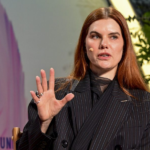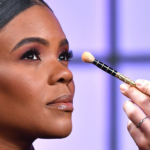As counterintuitive as it might seem, being trendy can be a curse for a clothing brand. Abercrombie & Fitch for years was a trendy tastemaker that told customers what was cool, not the other way around, and it worked. Until it didn’t.
A decade ago, the “It” brand of the 2000s and early 2010s crashed. Customers were turned off by the highly sexualized marketing and leadership’s disdainful attitude toward shoppers it said weren’t cool enough for Abercrombie & Fitch’s clothes.
Horowitz’s strategy has worked. A&F’s sales nearly doubled to $2.6 billion between 2019 and 2024; Hollister, which had also struggled, boomed too. This year, the combined sales of both brands will top $5 billion for the first time.
Maintaining that upward momentum is Horowitz’s big challenge. One tactic she’s employed is seeking out new partnerships. This summer, Abercrombie Kids started selling its clothing at Macy’s department stores. Separately, the National Football League chose Abercrombie & Fitch to be its first ever fashion partner with the retailer carrying merchandise such as mesh T-shirts and half-zip sweaters for each of the 32 NFL teams.
The upside of the NFL deal, Horowitz said, is the exposure to millions of NFL fans, half of whom are women. The CEO says that group hasn’t always been well served by team merchandise that too often has been “pink and sparkly”—not the more sophisticated products she is betting they want to wear on game day.
“The opportunity for us specifically is customer acquisition and brand awareness,” said Horowitz, a New York Giants fan. “Even though 50% of their fandom is female, perhaps they’re not recognized or celebrated as much as they can be, and they haven’t been served by merch exactly.”









